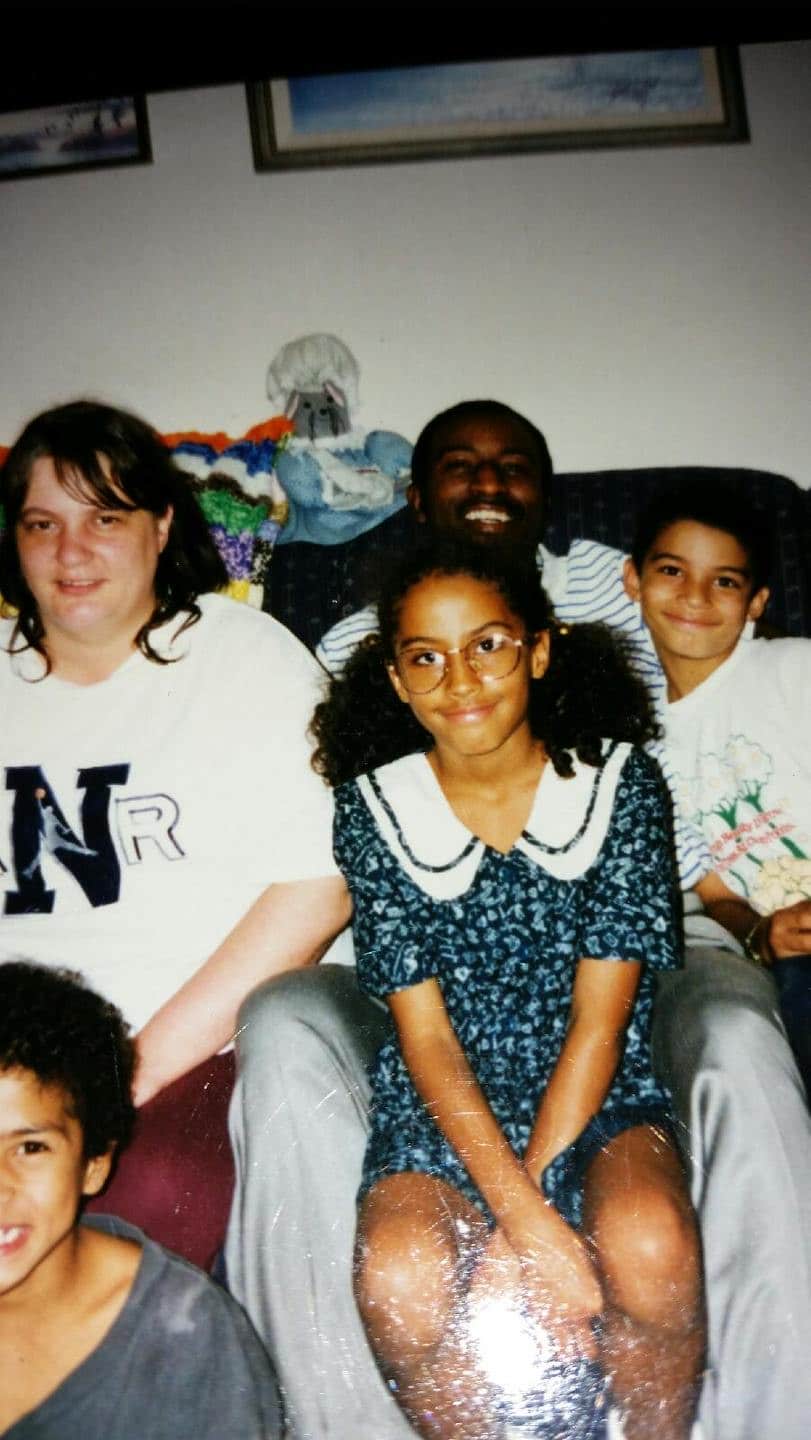How to Teach Your Mixed Race Kids Both of Their Cultures
Have you ever wondered how to explain culture to a child? I know it was something I struggled with for a while. Coming from a pretty diverse background I wasn’t sure how to incorporate all of the heritage, culture and history from both sides of our family. So how exactly does one do that?
Explaining Culture to a Child in Terms They Can Understand
Before one can dive into how, the question of why must be answered. Why culture is important? Having a child of a mixed / biracial / multicultural background will definitely play a role in the necessity for them to know their culture. Growing up as a biracial child (black and white) I often felt isolated. I didn’t know much about my mother’s side of the family. My father didn’t speak about his family and its culture either. This left me with an overwhelming sense of loneliness.
Knowing one’s cultures does more than just make you knowledgeable. Cultural awareness and strong ties to one’s family traditions help children develop not only a positive sense of identity but also build self-esteem. It is literally the foundation of who they are and who they will become.
When talking to your child about their culture it’s important to do so in terms they can understand. A simple definition of culture for kids can be something like “Our culture is the history of our people. It is what makes us who we are. And helps us identify with others around us.” Or an even simpler way to explain it would be to say “Culture is what makes us, us. And it is an important part of our self identity.”

What It Means (& Looks Like Internally) to Be Biracial
Having two very diverse cultural backgrounds can be confusing for anyone, but especially a child. From the outside most people only see their “exotic” features but being biracial gives you a duality that is hard to explain at times. Which is why teaching kids about their culture is so important, but especially so for multicultural children.
Tips for Teaching Both Cultures to Mixed Race Kids
I have often found that adults complicate things way more than we need to. We often think children can’t understand this or won’t be able to handle that. When the truth is, they are more than equipped to do just that. If you are struggling with how to talk to your children about their cultures, ask yourself why? Is it because you are afraid they may not understand? Do you think it will make them “hate” themselves or feel some sort of shame for their ancestors’ past? Do you think the best way to protect them is to hide it from them? Well, like every movie ever made has shown us, hiding anything from anyone ALWAYS backfires. Whose feelings are you really trying to protect? Sit down, reflect, and make sure it’s not your own.
It is imperative when approaching these types of conversations it is done with love and truth. Which means setting aside our own beliefs or feelings. As parents it is our job to guide our children not direct them. So as I list some tips, I’ll also recommend ways to ensure the conversations / activities are as unbiased as possible.
Explore Your Family Tree Together
When we think of culture we sometimes forget it includes our own family tree. But it’s actually the perfect place to start. Your family culture will have the biggest impact on your children. Teaching them who their great grandparents are, what they did and where they are from are all vital tidbits that will help shape their identity.

Talk About Both of Your Upbringings
Family traditions have been passed down from generation to generation. All by children learning what it was like for their parents growing up. This is one of the easiest ways to help with a young child’s sense of identity.
Have fun with these discussions. While still being as truthful as you can. They may have questions and it’s important that we answer them.
Let Them Ask the Hard Questions
Remind yourself that a child has never been here before. Therefore they are naturally curious. The questions they are asking are not out of spite or malicious. Even if its hard for you to answer, communicatie that to them. But then do your best to answer.
History repeats itself unless we do something about it. That something starts with talking about the mistakes of the past.
Expose Them to Role Models from Both Cultures
This one may seem hard, especially depending on what your culture is. But a role model can be someone they know personally, or a celebrity. Culture for kids is about seeing themselves in others. It inspires them and helps build their self confidence when they see others doing things they dream of doing. Especially with all the negativity on the television or social media these days.
Pass on Family Traditions
Teaching family traditions has so many benefits. Not only can it help explain your family’s history to your child, it can also bring the two of you together. Having a set ritual also provides a designed time for family members to bond and interact with one another. In addition to building trust filled relationships.
Passing along different family cultures is a great tool for instilling identity as well. Adults who struggle with their own identity are often those whose parents choose not to teach them about their family history.
So if you’re a mom raising a biracial or mixed child, teaching them all you know about both sides is extremely important. And if you don’t know much about one side, researching their heritage and customs is great too.
Emphasize That It’s Not About “Choosing Sides”
Oftentimes biracial children feel like they have to choose a side. We are told
“You’re not (insert race) enough.” Or “You look more (insert race) so you can’t pretend to be (insert other race). “
And it often leaves us feeling isolated. As if we do not truly belong. So teaching a mixed child about their culture is not about choosing a side. But about helping them come to understand and love all of who they are. One can’t be whole with only half the picture.

Normalize (and Celebrate) Differences
Everyone is different. There is no denying that. But when it comes to raising a multicultural child, celebrating these differences is vital. Cultural differences in raising children are what makes us all unique. It’s what shaped our view of the world around us. So when two cultures come together to make one human being, it is important to normalize all of the differences.
Taking time to learn, normalize and celebrate these differences will help your child from feeling like a part of them is bad or wrong. For most of my life I was told white was better. That being white was the right way. And while my father is a black man and was very present in my upbringing, his culture was never discussed. Or celebrated. So when I saw movies or heard people degrading it I believed them. Which made me ashamed to be black. And it wasn’t until I got older that I realized all of who I am makes me a truly amazing person.
Engage in Cultural Activities
I had a discussion with someone on Instagram about teaching their child how to not be racist. One of the main points I made was to engage in other cultures’ traditions. She was, of course, hesitant as cultural appropriation is real. However it is important to note, it is only cultural appropriation or erasure when you take something from another culture with no intention of crediting them.
Children learn through play. So doing activities that can help children understand diversity is the best way to teach them about it. This is especially true for mixed children. Being from two different cultural backgrounds means one parent is going to have to learn about another culture. It means you are going to have to engage in their traditions. Be a part of their culture. Even if it didn’t work out with the other parent.
I know my city often has lots of festivals depending on the time of the year. Many celebrate different ethnicities. Additionally the public library is another great place to engage in some cultural activities with your child. Oh and I can’t forget your closet children’s museum!
I know this is easier said than done, but making an effort is the difference between raising an antiracist child or not.
There truly isn’t a one way fits all when it comes to how to explain culture to a child. Things like your own upbringing, family traditions, and what you know about the other parent’s culture will have a major impact on this. What is important to keep in mind is that in most cases the effort is worth more than anything else. Sure you’ll make mistakes. Of course you may some saying thats incorrect, a little prejudice, or maybe even degrading to another culture. But the more research you do the more knowledge you will become. Just remember to keep an open mind and heart throughout the process.






